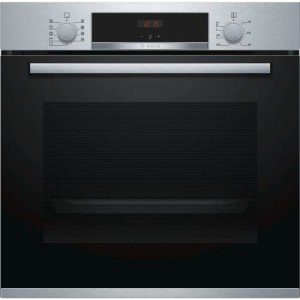The Rise of Built-In Ovens: A Seamless Approach to Modern Cooking
In modern kitchen areas, where style aesthetics blend flawlessly with performance, one device sticks out as a true video game changer: the built-in oven. As house owners and chefs alike continue to seek ingenious solutions that enhance their cooking experience, built-in ovens have actually become significantly popular. This short article explores the benefits, factors to consider, and trends surrounding built-in ovens, highlighting why they are a vital feature in modern cooking areas.
What is a Built-In Oven?
A built-in oven is a kitchen area appliance created to be integrated into the kitchen cabinetry of a cooking area rather than standing alone. Unlike fitted ovens freestanding ovens, which can be moved and positioned anywhere, built-in ovens been available in numerous styles and sizes to fit specifically within designated spaces. Available in single or double setups, these ovens provide a structured look that matches modern-day kitchen designs.
Advantages of Built-In Ovens
1. Space-Saving Design
Among the most attractive advantages of built-in ovens is their space-saving design. By incorporating the oven into cabinets, you can release up valuable counter and flooring area. This is especially helpful in smaller kitchen areas, where making the most of room is necessary. Built-in ovens can be set up at eye level, making them more available and reducing the need to bend down.
2. Visual Appeal
Built-in ovens add to a streamlined and cohesive cooking area design. Available in different surfaces-- such as stainless-steel, black, white, and custom cabinetry-- they can mix seamlessly into the general decoration. electric integrated oven improves the kitchen's visual consistency and elevates the area, producing a modern-day and advanced environment.
3. Boosted Functionality
Lots of built-in ovens come equipped with advanced cooking innovations, such as convection cooking, steam ovens, and wise functions. These improvements enable versatile cooking alternatives, making it simpler to attain professional-level results in the house. Smart built-in ovens can even connect to Wi-Fi, enabling users to manage the oven from another location, receive notifications, and gain access to a range of cooking programs and dishes.
4. Improved Ventilation
Because built-in ovens can be integrated with cooking area hoods and ventilation systems, they can assist preserve much better air quality and lower cooking odors. This is specifically substantial for those who love to prepare with aromatic spices and components, as a reliable ventilation system can keep the kitchen area comfy and inviting.
5. Modification Options
Built-in ovens offer a wide variety of modification alternatives to fit specific cooking designs and requirements. From professional-grade home appliances with numerous cooking modes to compact designs for smaller sized cooking areas, homeowners can select the oven that fits their specific requirements. Lots of manufacturers also provide customizable front panels, enabling you to match the oven's look to your cabinetry for a really merged appearance.
Factors to consider When Choosing a Built-In Oven
While built-in ovens have lots of advantages, there are very important factors to consider to bear in mind before purchasing:
1. Cost
Built-in ovens typically include a higher cost than their freestanding equivalents due to their design and setup requirements. It's important to aspect in both the expense of the oven and any extra costs connected to kitchen cabinetry modifications or setup.
2. Setup Requirements
Installing a built-in oven typically requires professional help, particularly if you need to modify existing cabinetry. Make sure that you consider any costs related to setup, consisting of labor and potential cabinetry modifications.
3. Size and Dimensions
Before buying a built-in oven, determine the designated area precisely to make sure a correct fit. Built-in ovens come in numerous sizes and configurations, so selecting one that lines up with your requirements and kitchen area design is vital.
4. Way of life and Usage
Consider your cooking routines and requires when selecting a built-in oven. If you often host large gatherings, a double oven may be more advantageous. On the other hand, if you have a compact kitchen area, a single-wall oven might suffice.
Patterns in Built-In Ovens
The kitchen area device market is continuously developing, and built-in ovens are not exempt from emerging patterns. Some current trends include:
Smart Technology Integration: With the rise of smart home technology, built-in ovens now typically feature connectivity choices. This enables users to keep an eye on cooking development and adjust settings via mobile apps.
Energy Efficiency: As sustainability becomes a top priority, numerous manufacturers are purchasing energy-efficient built-in ovens that decrease energy usage while maintaining performance.

Multi-functional Designs: Built-in ovens now use features such as air frying, slow cooking, and steaming, supplying flexibility that satisfies a wide variety of cooking methods.
Conclusion
Built-in ovens certainly represent an ideal blend of design, function, and convenience in today's kitchens. As more house owners choose this modern solution, the focus shifts to creating a cooking area that is as visually pleasing as it is useful. Whether you are constructing a new home or remodeling your cooking area, considering a built-in oven could raise your cooking experience and transform your kitchen into a stylish and practical haven. With a selection of choices offered and ongoing innovations in technology, built-in ovens stay a standout choice for both beginner cooks and culinary lovers alike.
